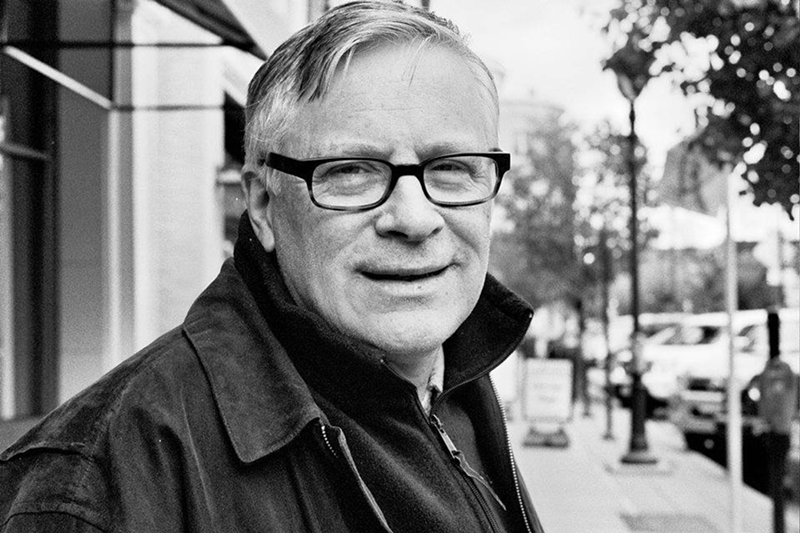Veteran newspaper reporter Jim DeBrosse’s Hidden City, set in, around and below the streets of Cincinnati, is a tour de force mystery thriller that also addresses many of the city’s social and political problems. Beginning with the discovery of a Native American victim of the bubonic plague outside a local homeless shelter, intrepid reporter Rick Decker for the fictional Cincinnati Eagle begins a perilous investigation that leads him past a vapid, apathetic newspaper managing editor, corrupt city health officials and real estate developers and ultimately into a “heart of darkness.”
This novel, “A Rick Decker Mystery,” was originally released in 1991 and was recently re-released. Its author is an award-winning newspaper reporter who has worked for more than 30 years at newspapers including the Cincinnati Post, Cincinnati Enquirer and St. Petersburg Times. He is now a visiting assistant professor of journalism at Miami University. CityBeat recently spoke to DeBrosse about his passion for writing, his love of Cincinnati and the state of the newspaper industry.
CityBeat: What is it about Cincinnati that makes it such a special city for you?
Jim DeBrosse: I grew up in Dayton, and Cincinnati was always “the big city.” We took the train down to Union [Terminal], had a cafeteria lunch at the main Post Office and then hopped a bus out to the zoo or Coney Island or the botanical gardens. Or we would just walk to Crosley Field for a Reds game.
CB: What interested you in writing about the bubonic plague?
JD: I was a newspaper medical writer earlier in my career and knew that there are maybe a half-dozen cases of plague in the U.S. each year. Most occur on Native American reservations in the Southwest where the inhabitants live in close proximity to wild animals, like coyotes and rabbits. They can carry plague and the fleas to transmit them.
CB: What did your research of the city’s old underground subway tunnels reveal?
JD: There were always lots of urban myths surrounding the tunnels — that gangs of teenagers roamed them at night, or that Satanic cults held rites there or, more commonly, that the homeless had whole colonies there. What I found was that none of that had been true for years, if ever. The tunnels were secured with iron doors and grates and regularly monitored.
CB: One of the many colorful characters is a homeless man. What were some of the truths you discovered about the homeless by spending time with them?
JD: Floyd — I think his real name was Ernie — had his own remarkable kind of integrity. He wouldn’t beg for change, but he would walk 10 to 12 miles a day collecting cans for recycling. If he was an alcoholic, I never saw it. Instead, he told me he hated living within four walls.
CB: As a veteran journalist you witnessed the rapid decline and decimation of print journalism, which plays a large role in this novel. Do you believe it is a trend that is worsening?
JD: I don’t know what the solution is to declining news readership, but certainly it’s not to choke newspapers and websites of their resources and then give customers the most superficial rundown of the day’s “news.” Readers know when they’re not getting their money’s worth.
CB: How much Jim DeBrosse do we see in your protagonist, Rick Decker?
JD: I think we share many of the same values, but not the same level of courage or physicality. I don’t jump off bridges into rivers or squeeze rats to death with my bare hands.
CB: What interested you in writing three mystery novels?
JD: I watched a lot of horror movies as a kid and had a lot of nightmares — thanks in part to an older brother who used to hide in our bedroom closet and pop out at night to scare the bejeebers out of me. I’m also something of a mystic who believes in darker realms.
CB: What writing projects are you working on these days?
JD: I’m currently trying to get a book published about the U.S. media’s failure to investigate the J.F.K. assassination. Yes, I’m a conspiracy theorist and proud of it. I’ve also got a couple of screenplays, including one based on my historical narrative, The Secret in Building 26, about the U.S. struggle to break the Enigma codes during World War II.
JIM DEBROSSE will read from Hidden City at Joseph-Beth Booksellers in Rookwood Commons 7 p.m. Wednesday, April 8. More info: josephbeth.com.






